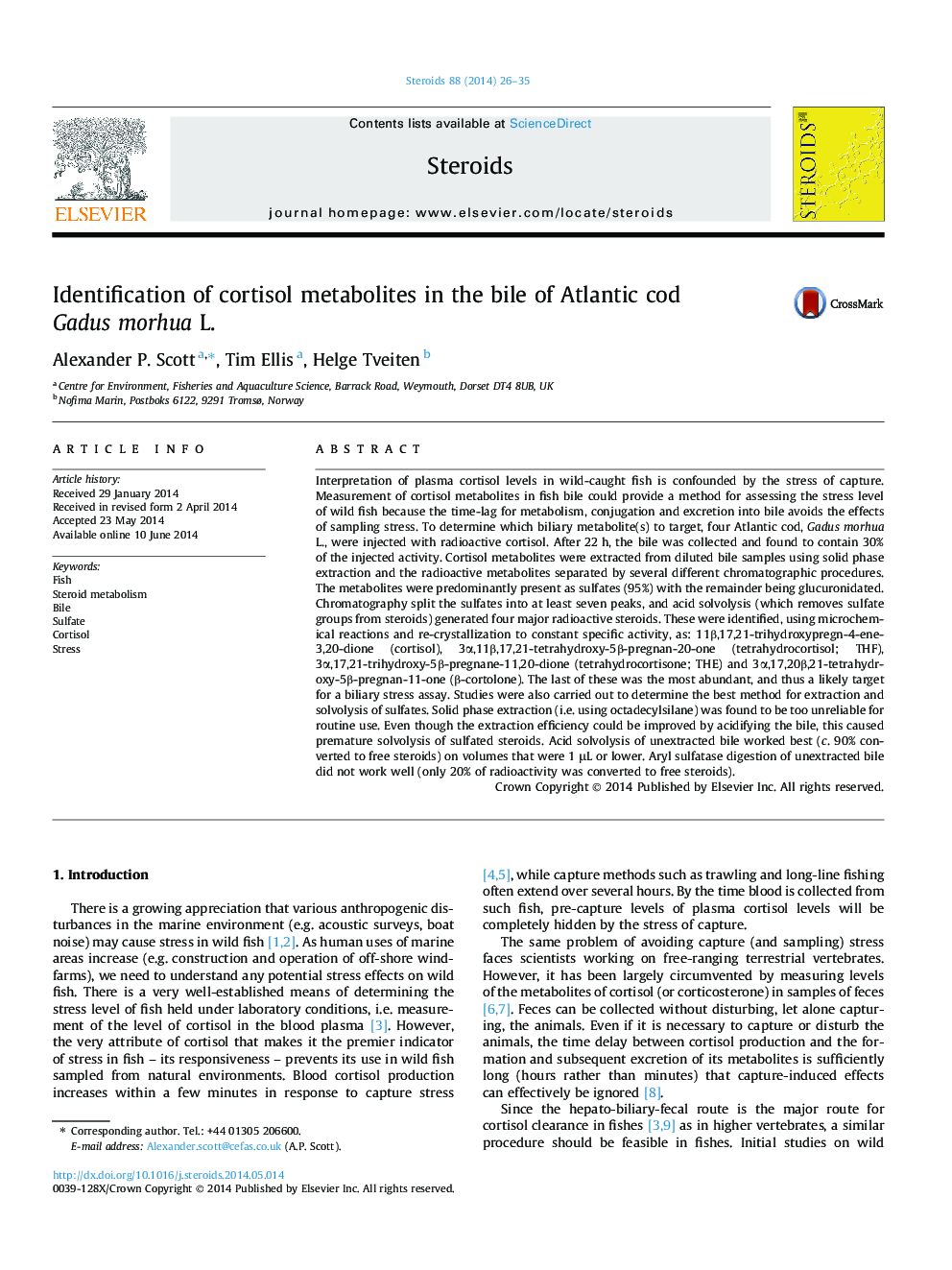| کد مقاله | کد نشریه | سال انتشار | مقاله انگلیسی | نسخه تمام متن |
|---|---|---|---|---|
| 2027881 | 1542719 | 2014 | 10 صفحه PDF | دانلود رایگان |
• After injecting cod with 3H-cortisol, 30% of radioactivity was in bile after 24 h.
• 95% of activity was conjugated to sulfate and only 5% to glucuronide.
• Acid solvolysis released four major (and readily identifiable) metabolites.
• Most abundant metabolite was ‘β-cortolone’.
• Efficiency of acid solvolysis was inversely related to volume of bile used.
Interpretation of plasma cortisol levels in wild-caught fish is confounded by the stress of capture. Measurement of cortisol metabolites in fish bile could provide a method for assessing the stress level of wild fish because the time-lag for metabolism, conjugation and excretion into bile avoids the effects of sampling stress. To determine which biliary metabolite(s) to target, four Atlantic cod, Gadus morhua L., were injected with radioactive cortisol. After 22 h, the bile was collected and found to contain 30% of the injected activity. Cortisol metabolites were extracted from diluted bile samples using solid phase extraction and the radioactive metabolites separated by several different chromatographic procedures. The metabolites were predominantly present as sulfates (95%) with the remainder being glucuronidated. Chromatography split the sulfates into at least seven peaks, and acid solvolysis (which removes sulfate groups from steroids) generated four major radioactive steroids. These were identified, using microchemical reactions and re-crystallization to constant specific activity, as: 11β,17,21-trihydroxypregn-4-ene-3,20-dione (cortisol), 3α,11β,17,21-tetrahydroxy-5β-pregnan-20-one (tetrahydrocortisol; THF), 3α,17,21-trihydroxy-5β-pregnane-11,20-dione (tetrahydrocortisone; THE) and 3α,17,20β,21-tetrahydroxy-5β-pregnan-11-one (β-cortolone). The last of these was the most abundant, and thus a likely target for a biliary stress assay. Studies were also carried out to determine the best method for extraction and solvolysis of sulfates. Solid phase extraction (i.e. using octadecylsilane) was found to be too unreliable for routine use. Even though the extraction efficiency could be improved by acidifying the bile, this caused premature solvolysis of sulfated steroids. Acid solvolysis of unextracted bile worked best (c. 90% converted to free steroids) on volumes that were 1 μL or lower. Aryl sulfatase digestion of unextracted bile did not work well (only 20% of radioactivity was converted to free steroids).
Figure optionsDownload as PowerPoint slide
Journal: Steroids - Volume 88, October 2014, Pages 26–35
